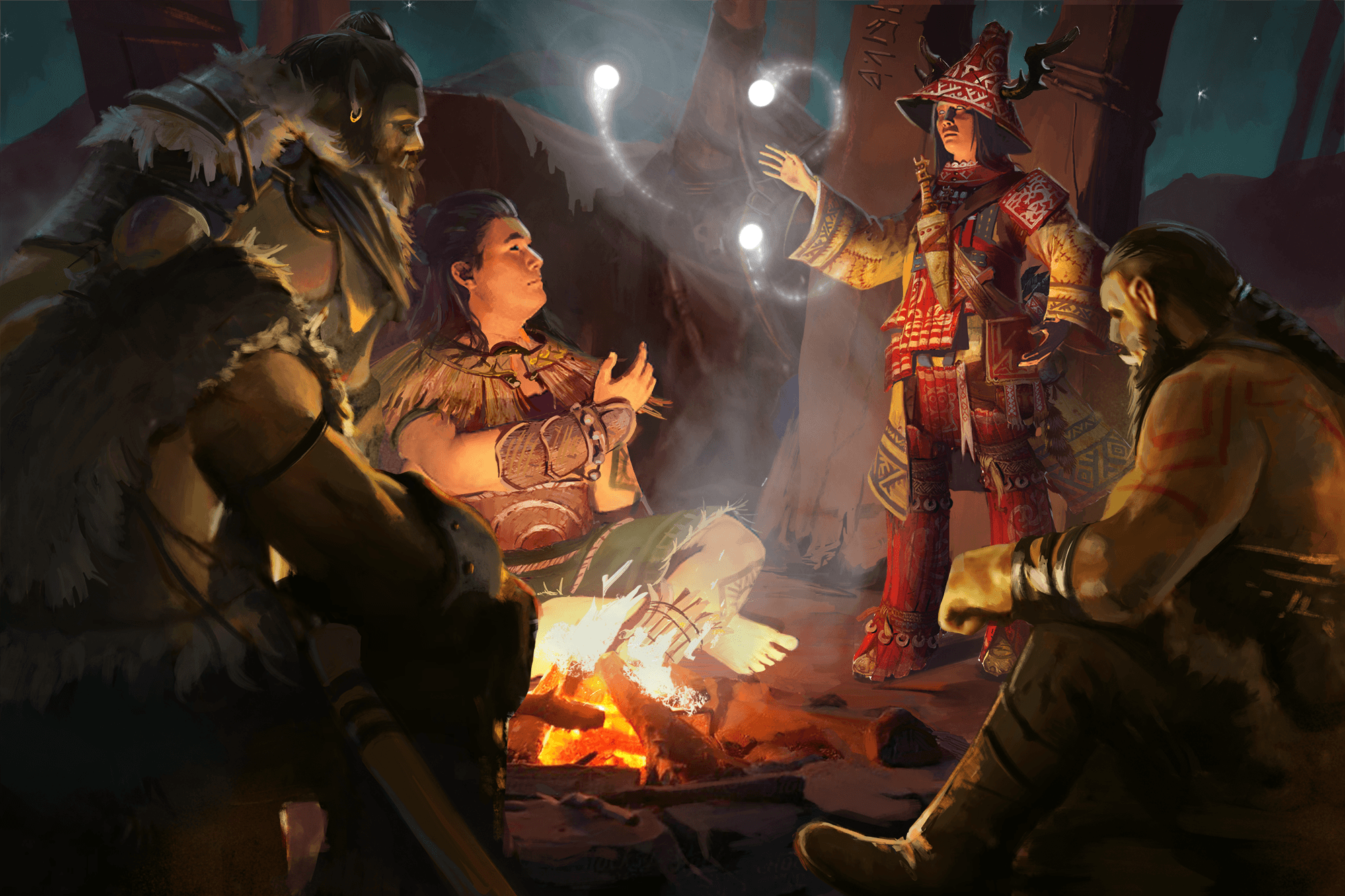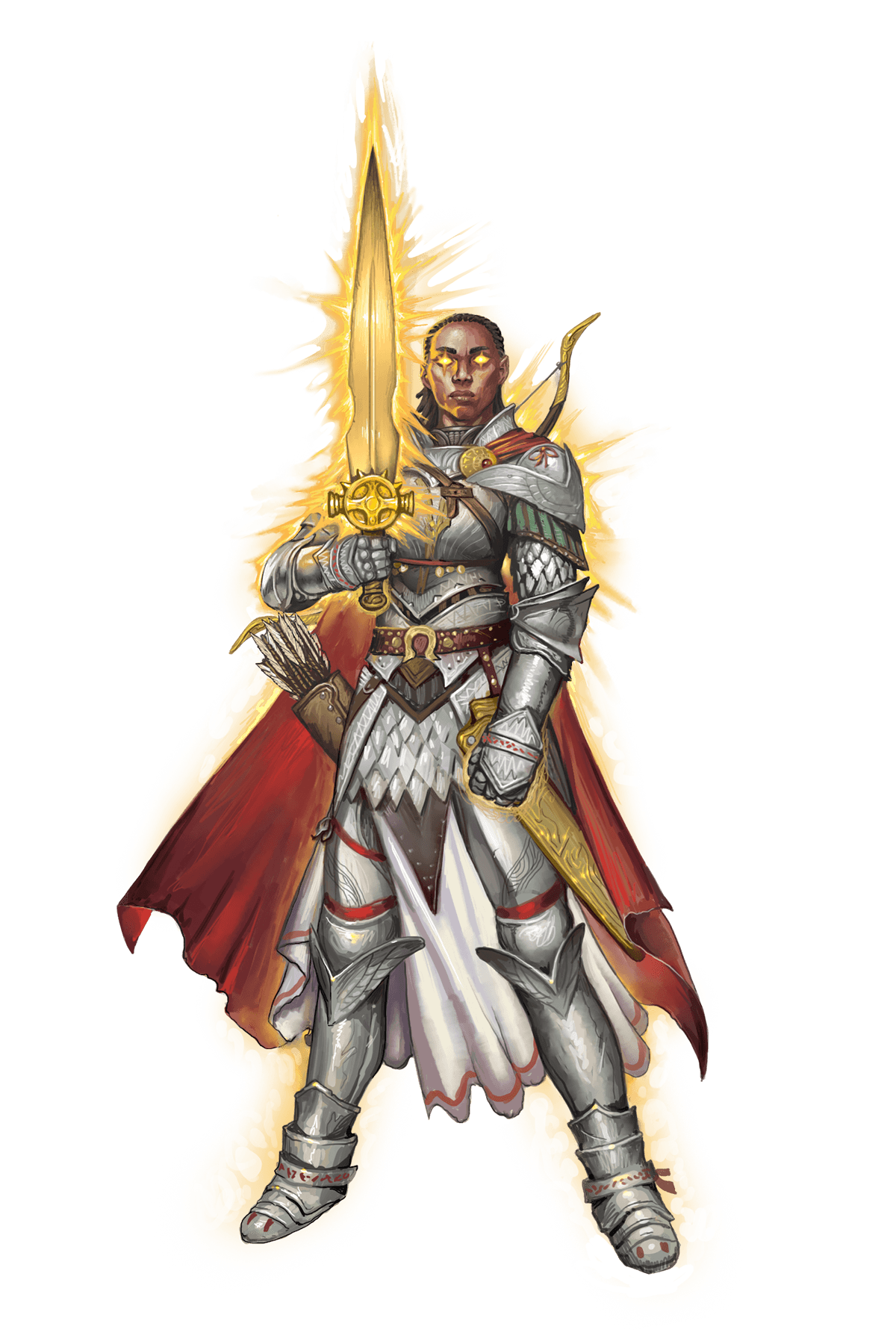Welcome friends! We are now checks watch about 26 days away from the release of War of Immortals, and there’s an important question I wanted to answer for all of you. Namely, “What is mythic?”
For those of you who played Pathfinder First Edition or Owlcat’s CRPG conversion of the Wrath of the Righteous Adventure Path, you might have an idea. In those games, mythic was an extra layer of power and resource that sat on top of your normal character, elevating and enhancing them to incredible levels of power via mythic paths, which were not entirely dissimilar to Pathfinder Second Edition’s archetypes (assuming you use the free archetype variant rules, and all the archetypes were super juiced with options that kick the ceiling off the base game!).
For War of Immortals, we went back to the roots of all the inspirations that went into the previous iterations of mythic rules and reimagined them from the ground up as a unique storytelling tool to enhance the narrative abilities of Pathfinder Second Edition.
Mythic adventures take their inspiration from legends, folktales, and other storytelling traditions around the world. These tales use wordplay and rarefied prose to convey moral lessons and tell stories that often defy logic. Mythic heroes and villains, even at lower levels of play, possess fantastical powers that are unbound by physics, and their ability to impact the narrative of the game world is often much more profound than is typical for a PC or NPC. To tell these stories we use five essential elements: Mythic Points, mythic proficiency, Callings, mythic feats, and mythic destinies.
When you first gain mythic power, this is expressed by your mythic Calling. Your calling gives you a unique way to spend and regain Mythic Points, makes you exceptionally hard to kill, presents you with a set of edicts and anathemas related to the purpose of your mythic power, and gives you the special Rewrite Fate ability, which allows you to use a Mythic Point to reroll a skill check or saving throw at mythic proficiency.
Mythic proficiency is a proficiency tier beyond legendary. Where legendary proficiency gives you a proficiency bonus of +8, mythic proficiency gives you a proficiency bonus of +10, and you might be able to use your mythic proficiency in specific ways as early as 1st level, allowing you to overcome challenges that would normally be far beyond a character of your level!
Mythic feats give you new ways to utilize your Mythic Points. Many of these expand the types of checks or other rolls you can make at mythic proficiency. Others, like the Divert Destiny mythic feat presented below, allow you to seize control of the narrative and dictate how your story unfolds.
DIVERT DESTINY [free-action] (FEAT 6)
Uncommon, Mythic
Trigger An attack or effect would reduce you to 0 Hit Points or kill you outright.
You defy the fate before you, calling on wells of mythic vitality to sustain your life and allow you to persevere. You expend 1 Mythic Point and survive the triggering attack or effect, lose the wounded or dying conditions entirely, don’t increase your doomed condition, and are conscious and standing with a number of Hit Points equal to 10 + your level, regardless of how many Hit Points you had before.
The final element of the new mythic rules, mythic destinies, gives you even more fantastic abilities and helps enshrine your character with an eternal place in the game world. Characters inclined toward cruelty or entropy might gain the apocalypse rider mythic destiny and spread war or famine across the world. Benevolent characters might instead become an ascended celestial, joining the heavenly ranks as an angel or azata to fight evil for all time. Characters with stronger ties to the mortal world might become prophesied monarchs or eternal legends, mighty leaders who are constantly reborn when the world needs them most. A rare few might even seek to complete the mythic destiny of a godling, joining the ranks of ascended deities like Irori and Iomedae!
Whatever your chosen path as a mythic character is, you have a potent array of tools and options available to achieve a destiny that will carry you beyond the heroic, past the legendary, and allow you to become truly mythic!
Michael Sayre (he/him)
Director of Rules & Lore
Read more at this site


